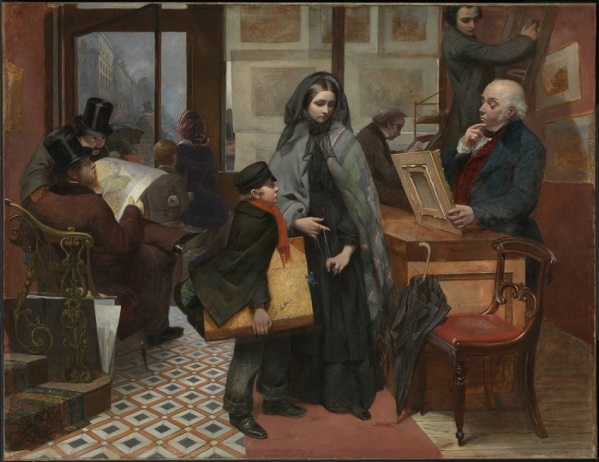Nameless and Friendless is the best-known painting by English painter Emily Mary Osborn.
Osborn was among the most the most successful women artists of the Victorian era and one who could stablish a reputation, she painted genre scenes, the most significants of them were pictures of modern women in distress situation.
She was one of the most important artists associated with the campaign for the women’s rights in 19th century.
Nameless and Friendless

The painting shows a sad and shy young woman in mourning accompanied by a boy, some art historians explains that he is her brother others that he is her son. The woman is attempting to sell a painting to an art dealer, whose expression is disdainful, while the assistant is looking down cursorily at the canvas. She is being observed by two men in the background, they’re were engaged in examining a print of a dancer/ballerina (the image of the bare legs of the dancer in the print suggests that there are other choices for an impoverished and desperate young woman).
She is isolated in the centre of the composition between glances of leer and contempt, her vulnerability is highlighted by her downward gaze and the fingers pulling a string.
When the painting was shown for the first time at the Royal Academy in 1857 the name was accompanied by a quotation from Proverbs (Nameless and friendless “The rich man’s wealth is his strong city, etc.” Proverbs, X, 15), what accentuate an idea that the city was not a place for women, it was a man’s domain and that a woman who risks to enter in there will occupy a precarious position.
The plight of women was one of her favourites themes, but it was very unusual to present a women artist in distress. Some experts believe that Osborn felt inspired by the subject of a novel wrote by Mary Brunton (Self-Control) that was reprinted twice during the 1850s. In the book, the heroine tries to sell her pictures in London to helps her family, but she never succeeded.









You must be logged in to post a comment.